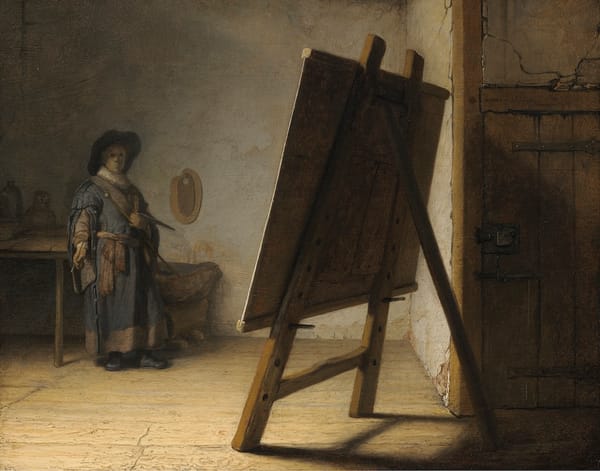Whispers of Memory: Amol K Patil on Sculpting Stories of Resistance
Amol K Patil merges sculpture, sound, and light to explore themes of social inequality and the invisibility of the working class. His immersive installations offer a poetic commentary on urbanization, history, and resistance.
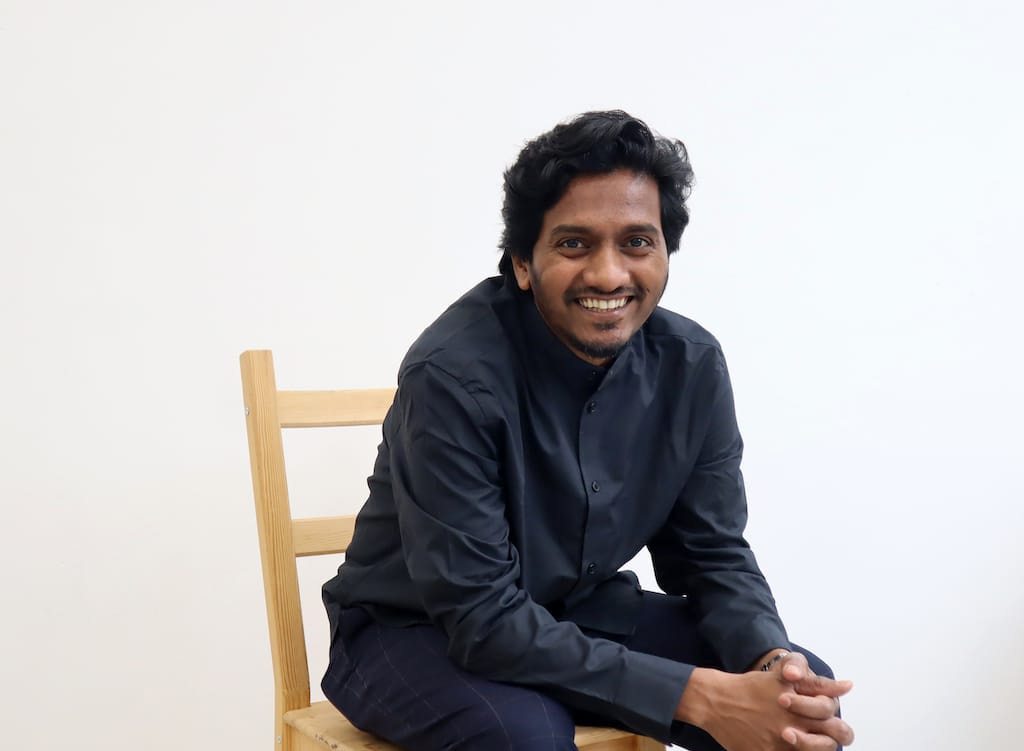
Amol K Patil, a Mumbai-based conceptual artist, uses art as a powerful tool to explore themes of social justice and the invisible stories of marginalized communities. His works, deeply influenced by his family’s artistic traditions, combine sculpture, sound, and light to create immersive environments that challenge societal norms and offer resistance to the erasure of history. From the architectural spaces of Mumbai’s chawls to the ancient art form of powada, Patil’s multidisciplinary practice seeks to amplify voices often left unheard. In this interview, Patil discusses his creative process and his latest solo exhibition, Whispers of the Dust, at the De Pont Museum of Contemporary Art, Netherlands, where he offers viewers a multi-sensory journey through time, memory, and resistance.
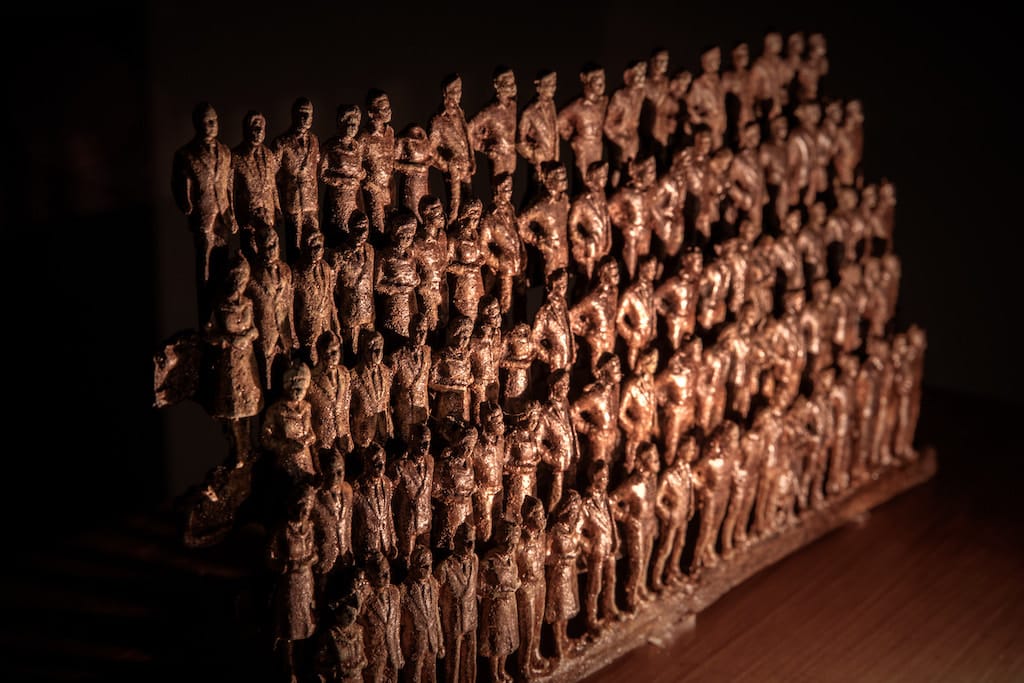
Serenade Team: Your exhibition “Whispers of the Dust” combines various elements like sculpture, light, and sound. How did you conceptualize this multi-sensory experience?
Amol K Patil: The idea for this experience comes from the intersection of history and the present. For instance, De Pont has a history related to textiles, and growing up in Bombay, I witnessed the bustling life around the textile mills—many of which have since shut down, but the spirit of the people remained. These individuals, who migrated to the city for work, became part of its fabric and eventually used art forms like powada to raise awareness about social injustice. My work plays with theatrical elements—light, sound, and visuals—to recreate that atmosphere and tell a story.
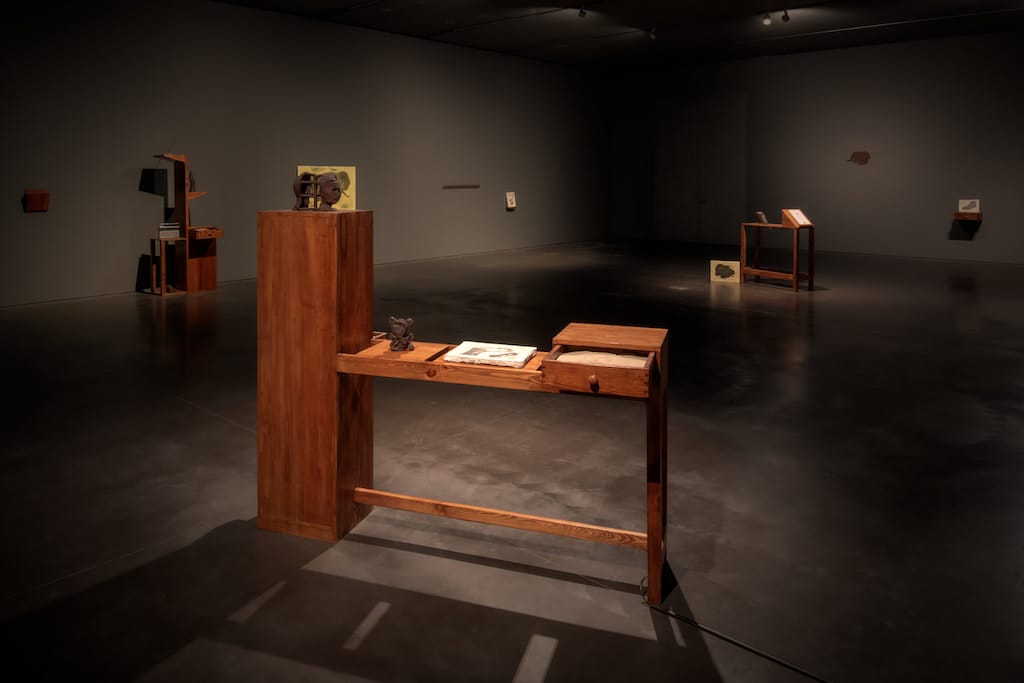
ST: The architecture of Mumbai’s chawls is central to this exhibition. What aspects of these spaces inspire you, and how do they translate into your sculptures?
AKP: The architecture of the BDD chawls has a significant history. Originally built by the British as prisons, these structures were later converted into housing after independence. They have long corridors connecting small rooms, and the lack of privacy creates a vibrant atmosphere where everyone’s lives overlap. The smells, sounds, colours, and textures are all part of the experience. I draw from these elements to create my sculptures, which capture the energy of these spaces and the conversations that take place within them.
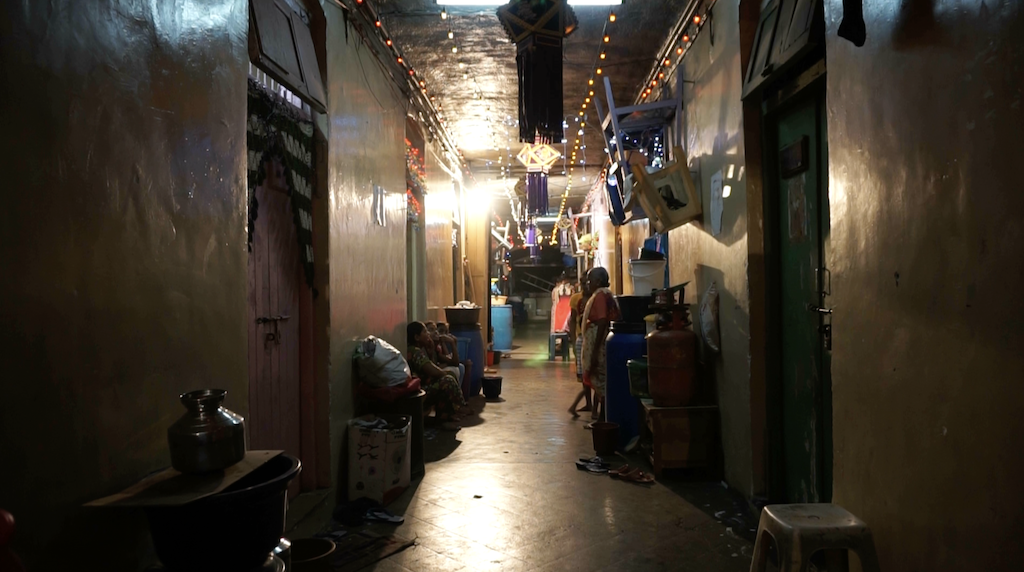
ST: Powada music plays a role in your installations. How do you integrate this traditional art form into a contemporary context?
AKP: Powada is an ancient art form, and my grandfather was a practitioner of it. It’s a form of poetic performance that travels from village to village, addressing social injustice while offering solutions. For my work, I collaborated with the Yalgar group to create new powadas using material from my grandfather’s archives. This blend of traditional and new compositions helps keep the essence of the past while making it relevant to contemporary issues.
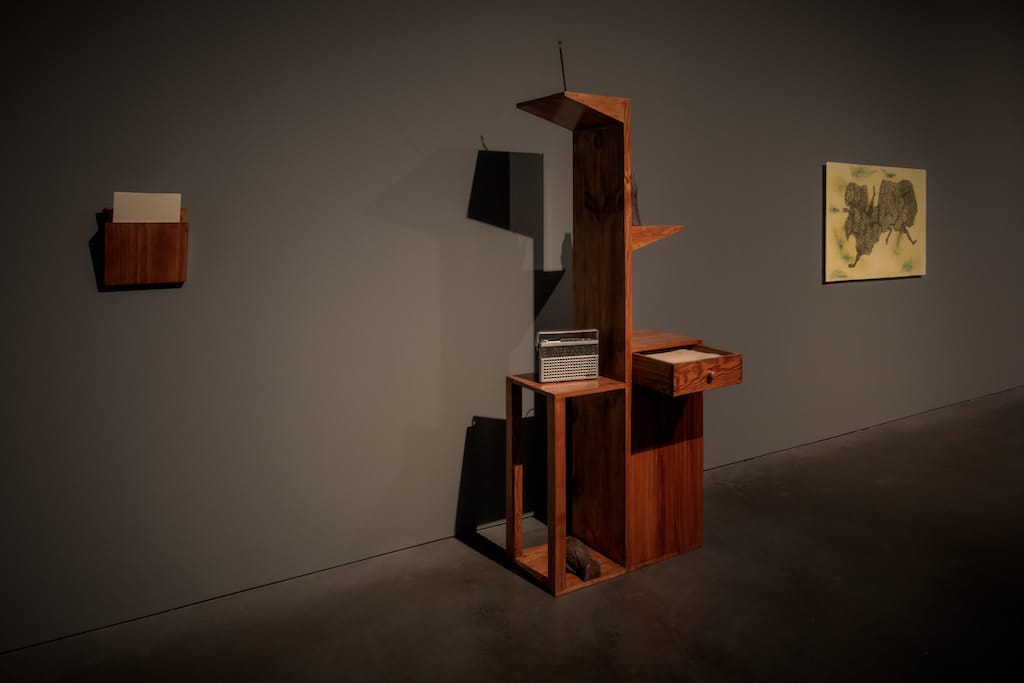
ST: Lighting is a key feature in your work. What role does it play in shaping the viewer’s experience, especially in “Whispers of the Dust”?
AKP: Lighting plays a critical role in creating a theatrical atmosphere for the exhibition. I wanted to keep the space dark, using spotlights to highlight the drawings and sculptures. Each piece is like a character in a play, and together, they form a dialogue. The lighting directs the viewer’s attention and shapes how they experience the work.
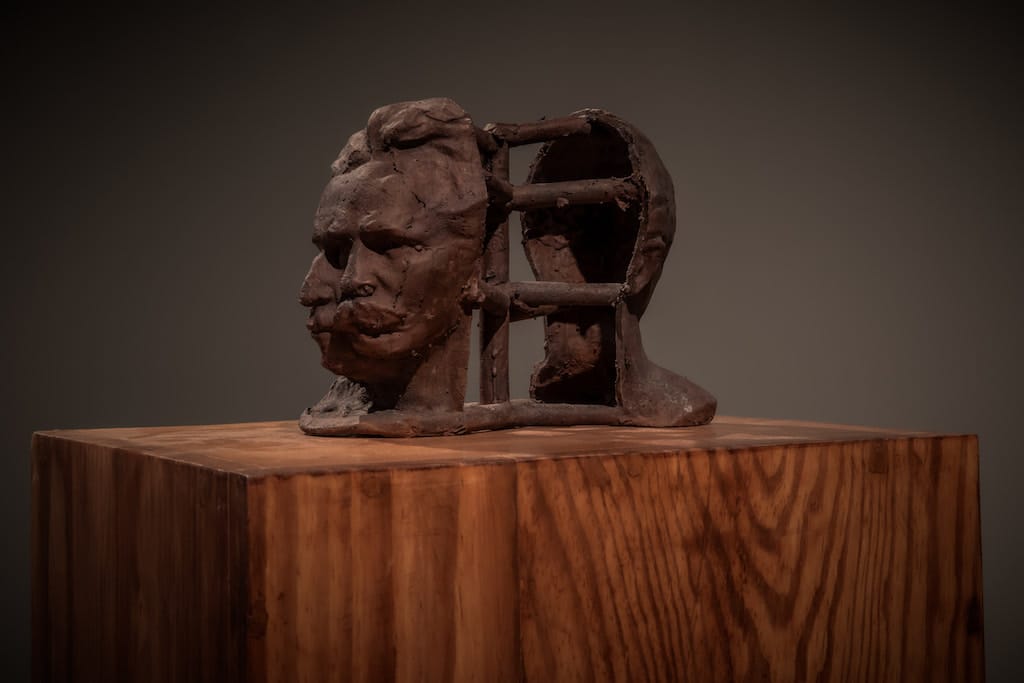
ST: You often use everyday objects in your sculptures. How do these materials help communicate the stories you’re telling through your art?
AKP: I see each object as a character with its own story. The everyday objects in my sculptures represent the harsh realities faced by people working in difficult environments. These objects are part of their daily lives, and the wear and tear on them echoes the physical and emotional toll on the workers themselves. I use these materials to create a narrative that speaks to both individual and collective experiences.

ST: The De Pont Museum’s new wing provides a unique environment for your work. How did you approach using this space to create an immersive experience?
AKP: The space at De Pont was very interesting to work with. I envisioned it as a black cube, where sound and light could create overlapping dialogues. The architecture allowed me to form chamber-like structures where sound resonates and interacts, much like in the housing societies of Mumbai. This setup enables viewers to experience a sense of disorientation, forcing them to engage deeply with the work.
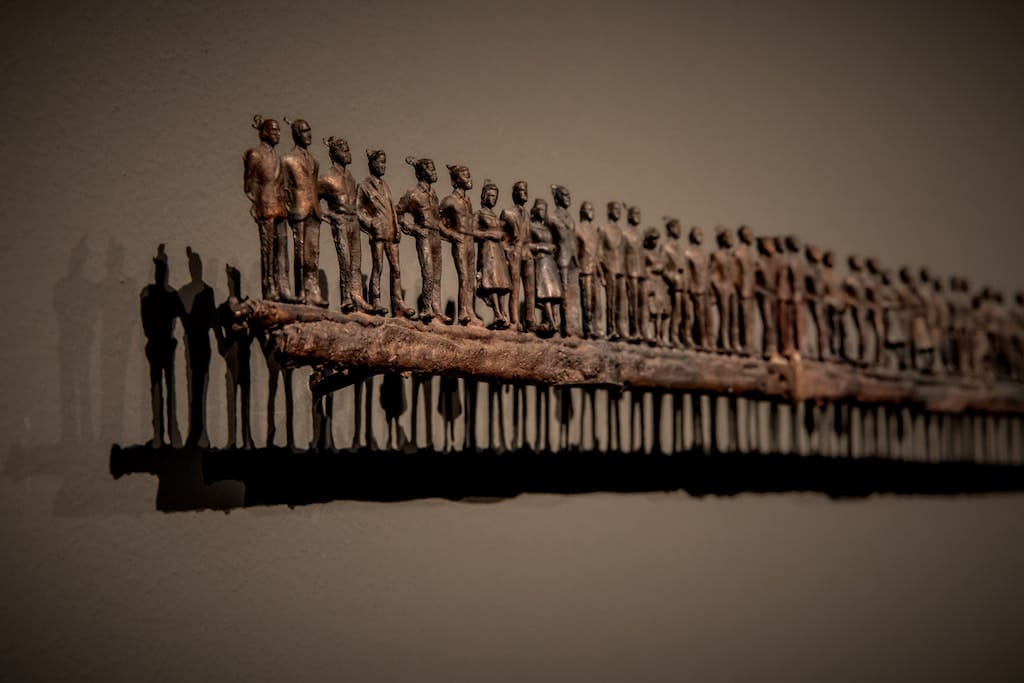
ST: As someone who works across multiple disciplines—visual art, performance, and music—how do you decide which medium best serves your vision for each project?
AKP: I approach my work as a collaborative theatre. I often start with conversations, collecting poems and scripts from various poets. I like to work with communities, and I always begin with drawings. These drawings then evolve into larger projects where I explore which medium—whether it be sculpture, performance, or sound—best communicates the narrative. It’s about layering, starting with archival material and then adding elements that reflect the past, present, and future.
'Whispers of the Dust' by Amol K Patil is on view at De Pont Museum, Tilburg, Netherlands, until March 9, 2025.


